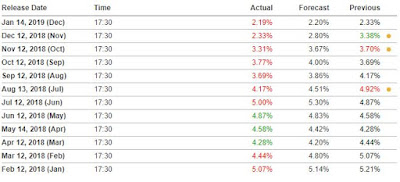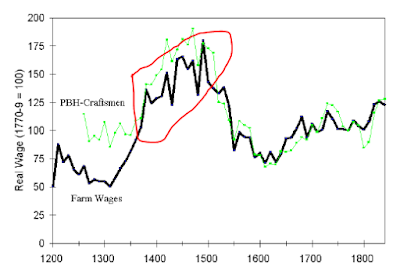India grows more prosperous!
Credit for all data and definitions related to the Legatum Prosperity Index goes to The Legatum Institute.The conclusions and correlations to government initiatives, are my own.
India has broken into the top hundred prosperous nations globally for the first time as per the Legatum Institute's 2017 Prosperity Index, coming in at rank 100. This is a meaningful improvement from the 115th place held five years ago in 2012.
The Legatum Institute (LI), a global think-tank, recently released the 11th iteration of its Prosperity Index. This is a proprietary tool of the LI that looks at nations not just through the narrow prism of economic growth, but defines prosperity as a combination of both, wealth and well-being. It is measured using over a hundred variables classed into nine ‘pillars of prosperity’ viz. Economic quality, Business environment, Governance, Personal Freedom, Social Capital, Safety and Security, Education, Health, and the Natural Environment.
The Legatum Institute (LI), a global think-tank, recently released the 11th iteration of its Prosperity Index. This is a proprietary tool of the LI that looks at nations not just through the narrow prism of economic growth, but defines prosperity as a combination of both, wealth and well-being. It is measured using over a hundred variables classed into nine ‘pillars of prosperity’ viz. Economic quality, Business environment, Governance, Personal Freedom, Social Capital, Safety and Security, Education, Health, and the Natural Environment.
In macro movements such as these, it makes sense to look at blocks of 5 years to gauge if changes are sustainable. Also, in the case of a country in transition, like India, where the government plays an important role in driving change, the year 2012 represents roughly the same relative chronological point pre-general elections as does 2017.
Note: The Prosperity Index has evolved over time as LI incorporated updated methodology and incorporated feedback from advisers to try and arrive at the best indicators of prosperity. It was started with 70 variables for around 50 countries in 2007 which has been gradually expanded over the years to 104 variables and 149 countries for the 2017 study. This makes the ranking in the 2017 report incomparable with its rank printed in earlier editions where the current methodology was not incorporated. For example, in 2015, India was ranked at 99, but in a smaller universe of 142 countries (vs. the current 149) and without scoring countries on the 9th pillar of natural environment which was added in 2016. However, the current methodology has been applied to past years in the 2017 edition, and ranks and scores for all 149 countries have been back-calculated, enabling comparability.
What is even more encouraging is that India’s rank gains have come across the board with the country reporting improvements in each of the nine pillars of prosperity. This is in contrast to a steep deterioration we had witnessed in eight out of the nine parameters in the previous five year period (2007-12).
A closer inspection of the underlying score (instead of the rank) in each of the nine pillars is even more revealing. Not only has India performed strongly in absolute terms, but has outperformed even relative to its Asia-Pac neighbours. That Asia-Pac as a region was the fastest growing region globally for prosperity makes this outperformance even more note-worthy.
Note:For Asia, simple average of the scores of constituent countries have been taken
It is especially pleasing to note that India has significantly narrowed its prosperity gap with its regional rival China by 60-65% in both rank-places and prosperity score terms over the past five years.
In fact over 2012 to 2017, India's growth rate has out-performed China's growth rate in eight out of the nine broad heads that the index uses to measure prosperity. Even in measures such as Economic Quality, and Business Environment that the Chinese government is able to greatly influence due to its centralized system of governance, India has out-paced Chinese growth by 500-900 basis points. The strongest relative out-performance (unsurprisingly) was in the categories of Social Capital and Personal Freedom, where India registered a 12-19% increase in its score vs. 1.1-1.6% decline for China.
Such index analysis now provides perspective to Chinese belligerence on the international stage and the virtual usurping of power by Xi Jinping in recent times. The Economic Quality index has shown a fall in absolute terms, as has Education which would likely impact future prospect. Exacerbating the situation is the further decline in Personal Freedom and Safety. Notably, the Personal Freedom score in 2017 is over 7% lower than it was in 2007. Social Capital has also eroded due to "...incomplete economic reforms, which have not yet addressed issues concerning a lack of accountability, higher levels of corruption, and cronyism..." (Prosperity Index 2017 Report, page 24). On an aggregate basis, despite its financial gains, that China has virtually stagnated in its prosperity rankings (2007:89th, 2012:87th 2017:90th) over the last decade indicating that there may be hidden social pressures at play resulting in the aggressive moves by the Chinese leadership, whether they be the Dolam Plateau misadventure or the domestic 'anti-corruption' purge. Is the famed 'social contract' between the Politburo and the people under threat?
India’s ranking on the other hand has been primarily driven by improvements in the metrics of ‘Economic Foundation’ and Institutional Framework’. This suggests that the government’s efforts to create system-driven, rule-based governance are bearing fruit.
In fact over 2012 to 2017, India's growth rate has out-performed China's growth rate in eight out of the nine broad heads that the index uses to measure prosperity. Even in measures such as Economic Quality, and Business Environment that the Chinese government is able to greatly influence due to its centralized system of governance, India has out-paced Chinese growth by 500-900 basis points. The strongest relative out-performance (unsurprisingly) was in the categories of Social Capital and Personal Freedom, where India registered a 12-19% increase in its score vs. 1.1-1.6% decline for China.
Such index analysis now provides perspective to Chinese belligerence on the international stage and the virtual usurping of power by Xi Jinping in recent times. The Economic Quality index has shown a fall in absolute terms, as has Education which would likely impact future prospect. Exacerbating the situation is the further decline in Personal Freedom and Safety. Notably, the Personal Freedom score in 2017 is over 7% lower than it was in 2007. Social Capital has also eroded due to "...incomplete economic reforms, which have not yet addressed issues concerning a lack of accountability, higher levels of corruption, and cronyism..." (Prosperity Index 2017 Report, page 24). On an aggregate basis, despite its financial gains, that China has virtually stagnated in its prosperity rankings (2007:89th, 2012:87th 2017:90th) over the last decade indicating that there may be hidden social pressures at play resulting in the aggressive moves by the Chinese leadership, whether they be the Dolam Plateau misadventure or the domestic 'anti-corruption' purge. Is the famed 'social contract' between the Politburo and the people under threat?
India’s ranking on the other hand has been primarily driven by improvements in the metrics of ‘Economic Foundation’ and Institutional Framework’. This suggests that the government’s efforts to create system-driven, rule-based governance are bearing fruit.
Off the grid, a businessman pays bribes. On the grid, he pays tax. Tax implies same rules for everyone; bribe implies different rules for different people. Established businesses with entrenched interests and relationships will prefer bribes as they serve as effective barriers to entry against new blood and competition. However, with a disproportionately young population, India is naturally moving on to the grid, as the young demand opportunities and not handouts. Having a sympathetic government only catalyzes the process.
Whether it is tax reform like the GST, or system overhaul like the demonetization exercise, or Aadhar linkages, or universal banking, a strong governance and institutional framework is vital for sustained progress within a country. Especially in a country like India where many prided themselves on ‘jugaad’ or ‘India Uninc’, the current government has taken bold steps to mainstream all sections of the economy
Whether it is tax reform like the GST, or system overhaul like the demonetization exercise, or Aadhar linkages, or universal banking, a strong governance and institutional framework is vital for sustained progress within a country. Especially in a country like India where many prided themselves on ‘jugaad’ or ‘India Uninc’, the current government has taken bold steps to mainstream all sections of the economy
It is also particularly heartening to see India perform exceptionally well on the Social Capital measure with its score on this metric rising over 19% (India ranks 82nd globally on this measure). LI describes this metric as:
“The Social Capital pillar measures countries’performance in three areas: social cohesion and engagement (bridging social capital), community and family networks (bonding social capital), and political participation and institutional trust (linking social capital). This pillar evaluates how factors such as volunteering, helping strangers, and donating to charitable organizations impact economic performance and life satisfaction. It measures levels of trust—whether citizens believe they can rely on others and whether they can rely on institutions such as the police force. It also measures whether citizens feel and act as though they have a say in the political process.”
Countless people experienced how a massive exercise like the demonetisation concluded relatively smoothly solely on the basis of their social relationships. A strong performance in this measure is indicative of how distorted a prism is perhaps projected by vested interests through over-focus on ‘intolerance’ and ‘award wapsi’ debates. What is also interesting is that the score for “Personal Freedom’ that had sharply declined in the period 2007-2012, has shown an improvement of 12% over the past five years.
The main area for concern for India (indeed the world) has been the ‘Safety and Security’ metric. This is a metric that has seen decline across the board for most counties (nearly 2/3rd of the universe), the largest single year fall in the eleven year history of the Index as pointed out by the Prosperity Index Report.
Source: Legatum Prosperity Index 2017 (page 5)
The 'Safety and Security' score for the 121-149 ranked bucket declined by 3%, largely in-line with the deterioration recorded for India for this measure. Safety, that includes personal and national safety, has seen the triple whammy of rising regional conflicts, natural disasters and, terror threats. This would be the key area for the Government to focus on. It is also an area where the government has most control over (subject to resource availability), in terms of prevention and responsiveness.
Source: Legatum Prosperity Index 2017 (page 5)
The 'Safety and Security' score for the 121-149 ranked bucket declined by 3%, largely in-line with the deterioration recorded for India for this measure. Safety, that includes personal and national safety, has seen the triple whammy of rising regional conflicts, natural disasters and, terror threats. This would be the key area for the Government to focus on. It is also an area where the government has most control over (subject to resource availability), in terms of prevention and responsiveness.
In conclusion, LI’s Prosperity Index that uniquely combines subjective and objective metrics has successfully captured the “feel good” factor that one sees on the ground in many parts of India. It is a handy tool in tracking the holistic progress of the nation and provides strong data underpinning to assessing the ‘mood’ of a nation. India’s scores and rankings allow one to corroborate some experiences and debunk some apparently media created myths. It suggests that changes initiated by the government are reflecting in the prosperity of the nation and provides an indicative roadmap for the path ahead.
Disclaimer: While all due care has been taken to in compiling the data, there may be errors or omissions in it. The author and the portal accept no responsibility for the completeness, accuracy or reliability of the data.











Comments
Post a Comment